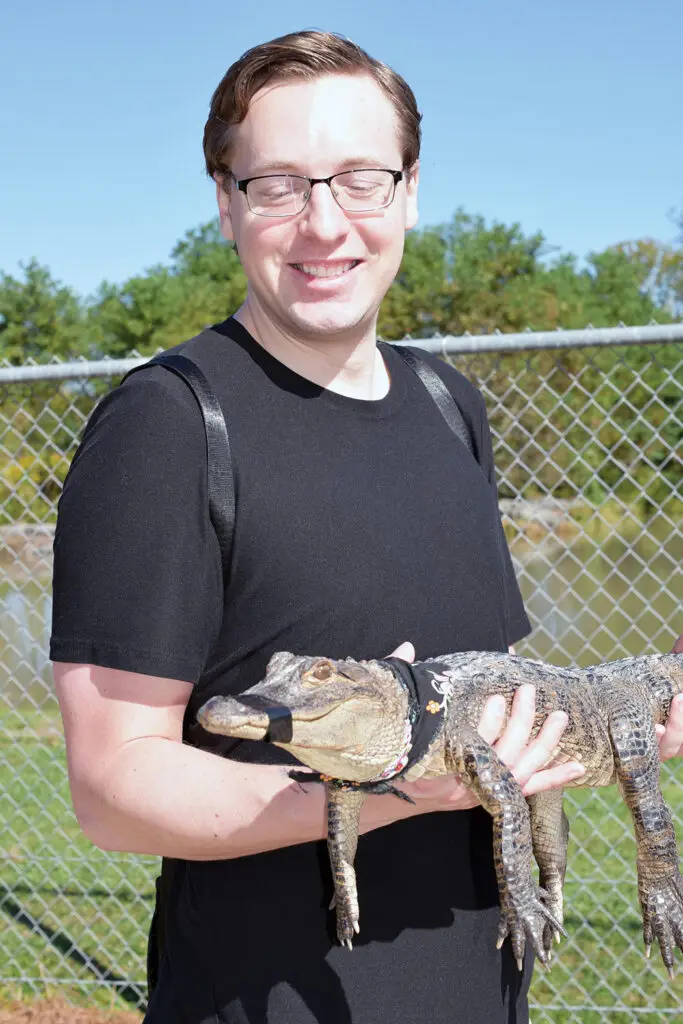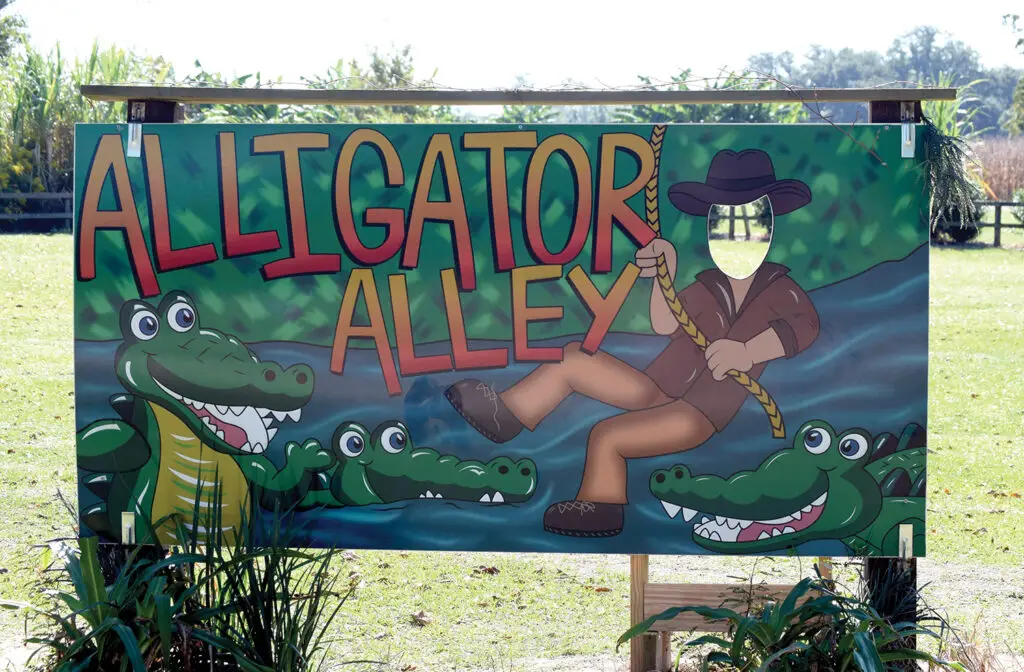Take a stroll through Summerdale’s Alligator Alley
For the past two decades, the alligator population in Baldwin County has been steadily growing. Located 18 miles north of Gulf Shores, Wes Moore’s 160-acre Summerdale property – home to Alligator Alley – now boasts over 700 primitive reptile residents whose distant ancestors once roamed the planet with dinosaurs. While many were born into captivity at the site, others were “nuisance animals” relocated from around the Southeast.

“Alligators have a small brain and a large stomach, and that gets them into trouble,” says Moore, whose family has lived in Baldwin County for over 150 years. “They have been known to borrow household pets or farm animals and not return them!”
Although rare, news of human attacks do occasionally spill into the media headlines, but Moore isn’t fond of the term “maneater.”
“Can they eat you?” he rhetorically asks. “Yes. But they prefer to live in isolated creeks and swamps. When those areas become waterfront property for humans, alligators may be labeled a nuisance and removed.”
For the animals retired to Moore’s alligator sanctuary, the food, water, and space are plentiful. While fights can still erupt between males during mating season, Moore says the higher ratio of females to males means less potential for injury than in the wild. Likewise, reduced competition for food leads to less conflict.
“Living here may extend their life expectancy by 50%, maybe up to 70 years,” says Moore. “Some will probably outlive me, although I hope they have nothing directly to do with that!”
While caring for hundreds of alligators is clearly a risky endeavor, Moore says he has avoided any contact with the animals’ crushing jaws since establishing Alligator Alley in 2004. But the appeal of danger is partly what drives thousands of visitors to flock to the sanctuary each year, especially eager to witness one of the three alligator feedings scheduled each day during the tourist season.
Restricted to a 60-acre area of the property with plenty of food on hand, it’s no wonder no alligator has broken out into the surrounding community. “Why would they leave?” Moore asks with a smile. “More than likely they would prefer to break in!”
Feeding time

Beginning around March when alligators become active, some 1,000 feral pig carcasses are fed to the animals annually, many tossed into the property’s gator-infested 23-acre pond throughout the warmer months. But it’s Moore’s appearance on a golf cart in the reptile’s territory behind the spectator chain-link fence that’s a highlight for visitors. Alighting with a cooler or two stacked with gator goodies (raw chicken pieces) and sporting a wide-brimmed straw hat, shorts, and heavy boots, he inches his way cautiously between the massive 10- to 12-foot-long beasts that lumber onto the bank from the murky pond.
He calls them all by name – Shredder, Elvis, Chili Dog, Big Easy, and J.W. – “which I named after a friend of mine since they both have only four teeth left.” He even offers some a friendly pat on the snout after a chicken thigh disappears through gaping jaws, into their voluminous 55-gallon-sized stomachs.
While visitors are permitted to hold smaller alligators or walk through tortoise and snake displays, it’s the massive alligators that draw the most attention. An 1,800-foot elevated boardwalk guides them through the back swamp where dozens of scaly beasts chill out in the green duckweed-covered water, often eyed cautiously by their blue heron neighbors wading through the shallows.

That area is also home to 13-foot Captain Crunch, somewhere in the upper region of 40 years old. Captured by a nuisance alligator trapper near Tallahassee, Crunch holds the world record for bite force at just under 3,000 pounds. If seized by its monstrous jaws, Moore can only offer an analogy of what the unlucky recipient might experience.
“If I dropped a car on you from a height of two feet, that’s the bone-crushing force these alligators could generate,” he explains.

When the cool weather arrives in October, the daily feeding ritual continues for a while but with smaller portions since the animals’ metabolism slows as they transition into brumation, a period of inactivity over winter when they avoid food for months.
Alligator Alley closes after Thanksgiving, reopening for the Christmas to New Year week, then remains closed until February 1. But late winter visitors may still glimpse the residents. “If the temperature is above 60 degrees, the alligators will be out for viewing, just no real activity,” says Moore.
Originally purchased by his grandfather in 1939 for farming, the property included a cypress swamp (later expanded) that was home to an alligator called Old Joe. Young Wes was permitted to feed the fascinating creature and the thrill never left, inspiring him to eventually establish an area to protect the animals and educate the public about their role in nature.
While Moore can appreciate an individual alligator’s nuisance factor, he says most do more good than harm.

“Although they do eat fish, they really don’t reduce the gamefish population since they prefer turtles, snakes, otters, and beavers in the wild – animals you may not want in your pond anyway,” he explains. “So an alligator can help manage your wetland better than you can.”
Alligator Alley is located at 19950 Highway 71 in Summerdale. Phone 866-994-2867 or visit gatoralleyfarm.com for more information.
Nick Thomas teaches at Auburn University at Montgomery and has written features, columns, and interviews for numerous magazines and newspapers. His website is getnickt.org.




